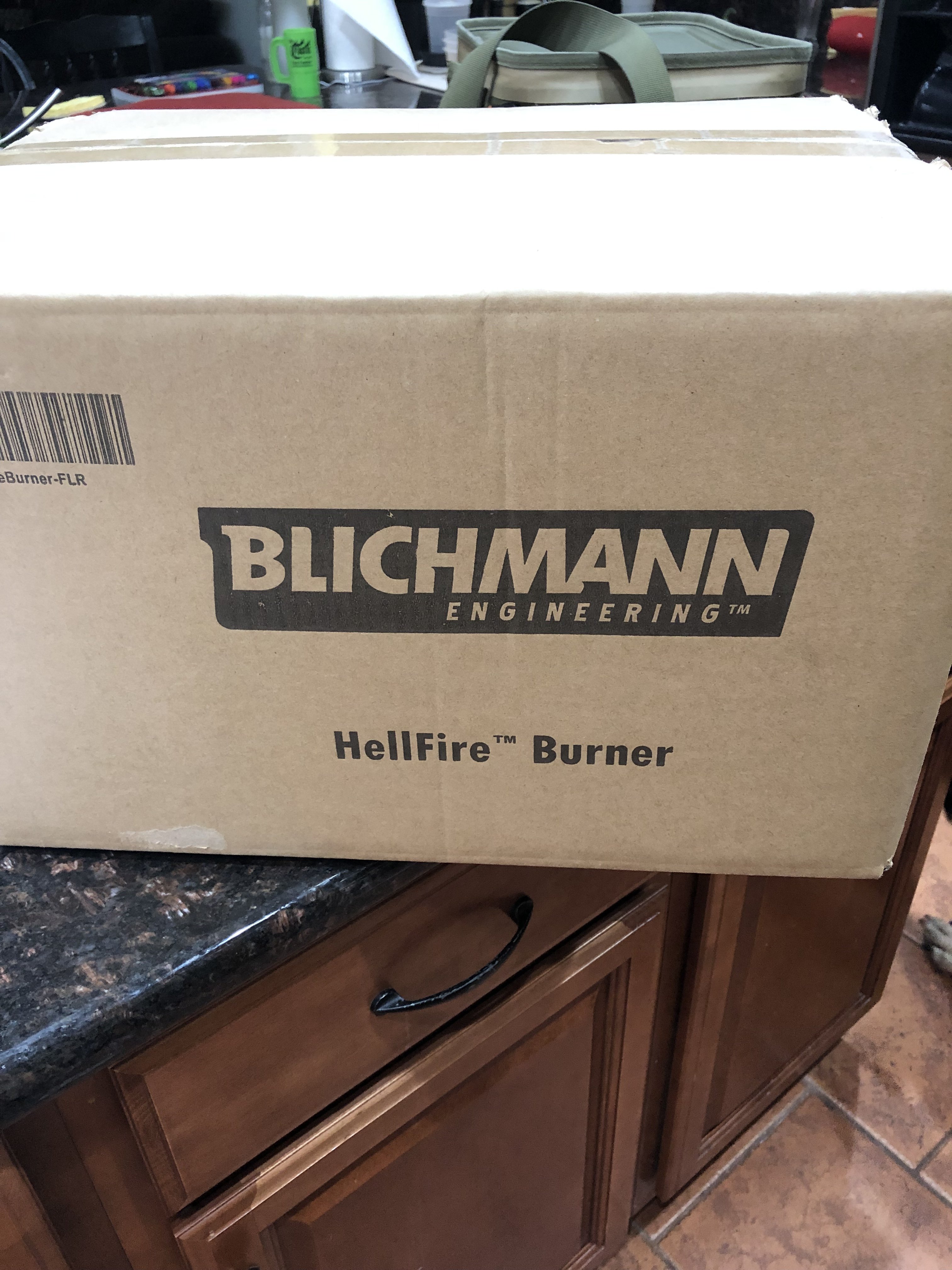The Hellfire is a monster. I can't believe how much faster it is than my previous burner. You can get water or wort to a boil very fast, and if saving time is important to you, then this will help. A lot.
I brewed in my garage with this for...maybe 35 batches. Blichmann has about 89 warnings about not using the hellfire indoors, or under an awning, or a carport, or <gasp> in a garage. I'm sure it can torch off a building in 2 minutes if you're not paying attention to it.
Well, I paid attention, so much so that I wouldn't leave it alone while burning. If I had to visit the little boy's room I'd ask my wife to watch it. Maybe foolish, possibly not, but I was darned careful with it. You should be, too, if you're at all tempted to use it in a way they warn against.
It's a helluva burner.
*******
You asked about what makes electric better. One thing is I can leave the system alone while heating without concern about burning down the building, which I would never do with the hellfire. I can also brew indoors in winter without having to exhaust steam out a window via box fan and opening the service door for makeup air and having to heat that as it comes in. Well, you don't have to heat the makeup air but I don't like brewing in 15-degree weather....

You can also control electric better.
When I went to electric, it cost me probably....well, somewhere between $1200 and $1500. A big cost was running 240-v electricity to the garage. Just the 30-amp ground-fault circuit breaker cost me $103. The electrician is a friend of mine, I did most of running the wiring, building wiring chases, and so on--he handled hooking it all up in the main box and in the sub panel I have in the garage.
Then there was the control panel I built. That cost....about $400. It was a DIY kit from Auber Instruments. I also added a 5500-watt element, had Spike brewing weld a couple Tri-Clamp ports on my kettle...then I added a RIMS system from BrewHardware, that cost around $300. The connection cords for the panel, element, and RIMS were probably $75-100.
It's nice, it's fun, I'm broke.
There are ways to do it much less expensively. If you already have 240-v power, that's a huge leg up. You can get a cheap controller (Stilldragon) for about $50.
But in the meantime...you're going to like that Hellfire.
BTW, a note on strike water with the Hellfire. It is SO hot that it'll actually heat up the kettle supports to cherry red. What I found is that when I reached my strike temp and turned off the burner there was enough retained heat that the temp rose a few degrees more. I learned to cut it off about 4 degrees short of my desired temp, then waited for it to drift up to it. Took a couple minutes for that to happen.









![Craft A Brew - Safale S-04 Dry Yeast - Fermentis - English Ale Dry Yeast - For English and American Ales and Hard Apple Ciders - Ingredients for Home Brewing - Beer Making Supplies - [1 Pack]](https://m.media-amazon.com/images/I/41fVGNh6JfL._SL500_.jpg)




